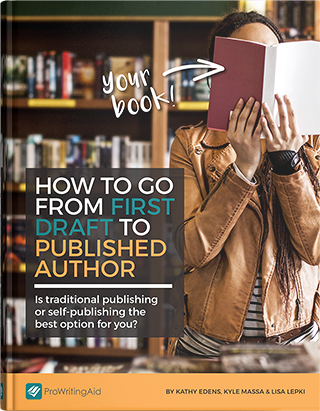
"What's in a name? That which we call a rose
By any other name would smell as sweet."
—Romeo and Juliet, II, ii, 1-2
What’s in a name? The title of your book may not change the story but it can change a potential buyer’s interest.
The title is one of the selling points of your book. Along with the cover it creates a first impression. A title that is interesting, catchy, and relevant to your story has a better chance to get a reader to buy your book.
The title of your novel creates a connection with your potential readers. Think about the effectiveness of a title that tells a story, like The Spy Who Came in from the Cold.
Your choice directly impacts the buyer’s first impression.
Brand Awareness and Genre Targeting
Because the title is so important, many authors wait until they finish their novel before they create it. They may have a working title while the novel is in progress but save the name of the book until they complete the manuscript. This can be particularly helpful for cross-genre novels, as the target readership may only become clear during the writing process.
Tucker Max of Scribe Media stresses the selling potential of a title:
The title of your book is–by far–the most important book marketing decision you’ll make.
Memorable titles also help readers connect the title with your name. Your author name is your brand. When readers associate your name with the book you write, you build your brand awareness. Authors who offer more than one book benefit by creating titles similar in format and concept.
Features of a Good Title
You have several options for creating a book title, but all good titles have elements in common:
- grabs attention
- easy to remember
- indicates genre or theme
- easy to say
These guidelines make your title recognizable, targeted toward your genre, and easy for someone to remember when they recommend your book. You book will get noticed, be remembered, and shared with other potential readers.
Creating Your Book Title List
Your title is a marketing tool, so choose your title with your reader in mind. Your reader is someone who enjoys books in your genre. Use a marketing filter when you think about your book title. Get the essence of your book, then add words with emotional hooks.
Finding the right title for your book is a brainstorming process. Start large. Think of as many titles as possible first. Take time. Work the process over at least a few days if not weeks. Every time you think of a title possibility, write it down. While you are in the stage of compiling ideas, don’t judge, just add title ideas to your list.
While publisher [iUniverse] suggests examining titles in your genre as a sixth step, looking at your successful competitors is a shrewd tactic. Knowing how successful authors in your genre use titles to sell books is a good guideline for how to think about framing your title.
Make a list of potential titles. Start your title idea list while you are writing and keep adding to the list as you get new ideas.
Once you have a sense of the titles that sell in your genre, brainstorm titles for your manuscript. Is your story steamy or sweet, action-packed or literary? Dark and chilling, or light-hearted and cozy? Think of words and phrases that capture the tone of your manuscript.
Go through your manuscript looking for phrases, including dialogue, that reflect the essence of your story. Think of your story theme or the major conflict. Is there a quote—poetry or Biblical—that suits your novel?
The idea is to gather as many title possibilities as you can. Then play with your current title collection by trying one of these tricks:
1) Change word order.
2) Add an action verb. Kick, Kill, Kiss...
3) Add an emotionally charged adjective. Deadly, Ravished, Irresistible...
4) Work in your protagonist’s role. The Magistrate, The Stumbling Detective,
5) Reference the antagonist or her role. Hannibal is a good example.
6) Use location.
At the end of this process, you’ll have a long list of title ideas.
Pro Tip: Make sure the title you use is not already popular. Do a quick search to make sure.
Tools For Fun
Title generation tools are fun to use to spark ideas if your title muse doesn’t show up. Keep in mind that doing the work is still the best way to create a title that works for your potential readers.
Here are two title generators that can help you bring your muse back.
The Fictionalley title generator can get you started just by switching words. You’ll get ten title ideas per word set. It’s a great way to get your title juices flowing.
Lulu’s Titlescorer claims to give you an idea of your book titles by entering and title and adding a few bits of information. Satisfy your curiosity, but I tested several best-selling titles that all scored at 10.2%. So take results with a grain of salt.
Narrow Down Your List
Brainstorming is playful and fun, but once you have a big title list, you need to narrow down the options.
Review the titles of successful books in your genre. Evaluate which of your titles best suit your genre, and remove the rest from the list. This should turn your long range of options into a more focused shortlist.
Test Your Title
Before you make a final decision, get feedback. Use vehicles to test your title.
- Informal choices from friends and family. May be instant feedback but not always the best marketing judgment.
- If you have a reader fan base, send a survey. Use quick tools like SurveyMonkey or a Google Form to compare choices.
- Get feedback from real readers customers with PickFu
Your novel title is a first-level marketing tool. Use a brainstorming process. Guide your decision by the novel’s genre. Then, test for feedback before you make your final decision.
How did you get on? Let us know in the comments!


